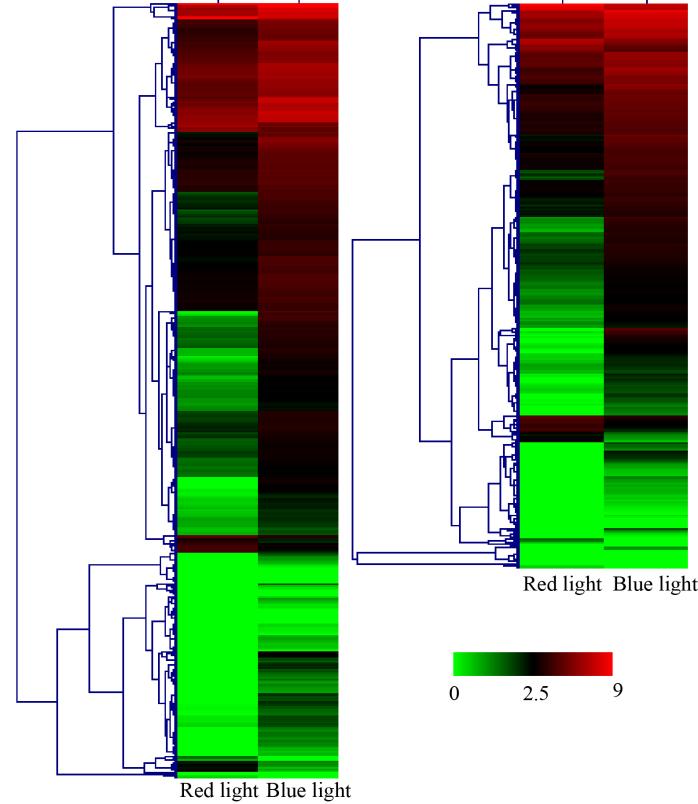
Plant hormone signal transduction.

Heatmap of genes from metabolic pathways and biosynthesis of secondary metabolites.
Abstract
The mechanisms by which different light spectra regulate plant shoot elongation vary, and phytohormones respond differently to such spectrum-associated regulatory effects. Light supplementation can effectively control seedling growth in Norway spruce. However, knowledge of the effective spectrum for promoting growth and phytohormone metabolism in this species is lacking. In this study, 3-year-old Norway spruce clones were illuminated for 12 h after sunset under blue or red light-emitting diode (LED) light for 90 d, and stem increments and other growth traits were determined. Endogenous hormone levels and transcriptome differences in the current needles were assessed to identify genes related to the red and blue light regulatory responses. The results showed that the stem increment and gibberellin (GA) levels of the seedlings illuminated by red light were 8.6% and 29.0%higher, respectively, than those of the seedlings illuminated by blue light. The indoleacetic acid (IAA) level of the seedlings illuminated by red light was 54.6% lower than that of the seedlings illuminated by blue light, and there were no significant differences in abscisic acid (ABA) or zeatin riboside [ZR] between the two groups of seedlings. The transcriptome results revealed 58,736,166 and 60,555,192 clean reads for the blue-light- and red-light-illuminated samples, respectively. Illumina sequencing revealed 21,923 unigenes, and 2744 (approximately 93.8%) out of 2926 differentially expressed genes (DEGs) were found to be upregulated under blue light. The main KEGG classifications of the DEGs were metabolic pathway (29%), biosynthesis of secondary metabolites (20.49%) and hormone signal transduction (8.39%). With regard to hormone signal transduction, AUXIN-RESISTANT1 (AUX1), AUX/IAA genes, auxin-inducible genes, and early auxin-responsive genes [(auxin response factor (ARF) and small auxin-up RNA (SAUR)] were all upregulated under blue light compared with red light, which might have yielded the higher IAA level. DELLA and phytochrome-interacting factor 3 (PIF3), involved in negative GA signaling, were also upregulated under blue light, which may be related to the lower GA level. Light quality also affects endogenous hormones by influencing secondary metabolism. Blue light promoted phenylpropanoid biosynthesis, phenylalanine metabolism, flavonoid biosynthesis and flavone and flavonol biosynthesis, accompanied by upregulation of most of the genes in their pathways. In conclusion, red light may promote stem growth by regulating biosynthesis of GAs, and blue light may promote flavonoid, lignin, phenylpropanoid and some hormones (such as jasmonic acid) which were related to plant defense in Norway spruce, which might reduce the primary metabolites available for plant growth.
The paper link:
http://journals.plos.org/plosone/article?id=10.1371/journal.pone.0127896


